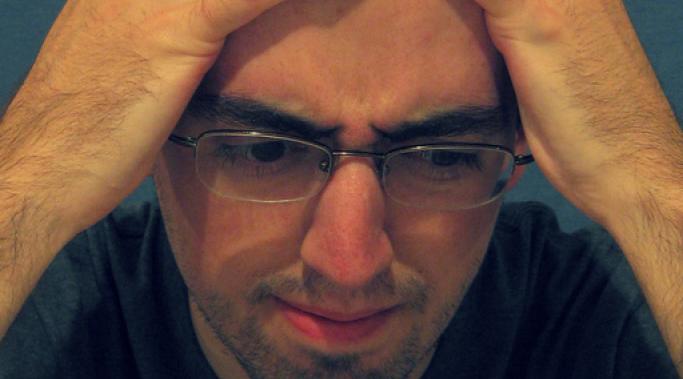I define self-sabotaging behaviors within Dissociative Identity Disorder as any thought, feeling, or action by any member of the system that actively impedes the intentions and goals of any other member of the system. Self-sabotage, by my definition, is a regular part of life with DID. And what most of us do when an alter disrupts our lives in some way is attempt to change the disruptive behavior. It makes sense, but it's counter-productive. Before you know it, you're entrenched in a power struggle that ultimately solves nothing. Without even realizing it, I engaged in a power struggle for years with an alter who effectively blocked all internal communication. Once I became aware of the situation, I stopped trying to change it. I now believe acceptance is the first step in managing self-sabotaging behaviors. And communication, I think, is the second.
Dissociative Living
Remember when I said I didn't know what to do about mental health warning signs when they flare up? The past two weeks of my life painfully demonstrate the consequences of that ignorance, along with some of the ugly truths about dissociative identity disorder. I knew my mental health was deteriorating. I was talking about it, writing about it, and actively looking for solutions. I saw the edge of the cliff and did everything I could not to fall. But fall I did.
Self-sabotage is hard for anyone to deal with. But I think managing self-sabotaging behaviors when you have Dissociative Identity Disorder is more difficult. So when I say that I think doing so is a matter of acceptance, communication, and compromise, I don't mean to over-simplify the monumental challenge that it is. Accepting things that directly impact your life in negative, destructive ways is frightening to say the least. But the most life changing negotiation with an alter I've ever had wouldn't have happened if I hadn't done exactly that.
You really want to lose weight but you keep stocking your pantry with junk food, "for the kids." This is self-sabotage, the frustrating outcome of conflicting conscious and subconscious desires. If you have Dissociative Identity Disorder, self-sabotage is more complex. Alters have the ability to A) assume control of the mind and body, and B) exert enough influence to impact the thoughts, feelings, and behaviors of other system members. Add to that the fact that Dissociative Identity Disorder exists in part to compartmentalize conflicting perceptions and it's not surprising that many people with DID experience particularly pervasive and disruptive forms of self-sabotage.
If you have dissociative identity disorder, dissociation is your primary coping mechanism. As such, it's both adaptive and maladaptive. It allows you to continue functioning despite overwhelming stress. But dissociation is also what prevents you from recognizing that you've fallen off a cliff until you hit the ground. The idea behind taking stock of mental health warning signs is to notice your free fall a little sooner. Ideally, you'd eventually have the awareness to see the edge of the cliff from a distance and avoid it altogether.
Living with dissociative identity disorder (DID) presents unique difficulties, whether you're the one that has it or the person who loves the one living with it. I can only imagine how frustrating, confusing, even painful it must sometimes be to have a partner with DID.
I've witnessed how challenging it often is for my own partner and, if some of the comments I've received here at Dissociative Living are in any way representative, her experience is typical. But it's also largely ignored. Partners of people with DID don't get that much support or encouragement, primarily because only those who've been there can truly understand (Caregiver Stress and Compassion Fatigue).
If you have Dissociative Identity Disorder, recognizing when you're on a downward spiral may be incredibly difficult. Dissociation separates us from our thoughts, feelings, and experiences and makes maintaining awareness of our very realities a monumental challenge. My hope is that by taking stock of my mental health warning signs, I can increase my chances of noticing the next decline in functioning at its inception, rather than coming out of a dissociative fog six months in and wondering what happened to my life.
For some time now, my mental health has been declining. My partner admitted to me last night that if it were still possible to commit loved ones she would have had me hospitalized months ago. And though I didn't realize she was quite that concerned about my mental condition, she's been telling me that I'm not well for a while now. I've been unwilling to hear it, insulted by what I believed was a lack of faith in me and thoroughly annoyed at her refusal to recognize how brilliant and capable I truly am. Oh denial, my old friend, you've made me a fool once again. Sadly, I doubt it will be the last time. Because I still haven't learned to take mental health warning signs as seriously as I take my pride.
We know Dissociative Identity Disorder is a trauma disorder. In the past, many clinicians approached treatment as if it were an archeological dig, excavating for traumatic, dissociated memory. I think most people agree at this point that that's at best ineffective and at worst harmful. But the nature of dissociative memory is such that most people with DID have more questions about their histories than answers. And while I think those of us with Dissociative Identity Disorder do have to learn to tolerate some ambiguity, I also think we have more answers than we realize.
The man typed some figures and stared at the computer screen, eventually muttering, "You qualify for $440 a month in assistance. Your rent is $740. Don't know how you're going to do it." I stared at a rip in an orange, Naugahyde chair. I didn't know how I was going to do it either. It was the year I discovered what it's like to live on welfare (How to Get Disability Benefits for Mental Illness). I learned valuable lessons about poverty that I won't soon forget. And I came face-to-face with the realities of severe mental illness and invisible disability.









